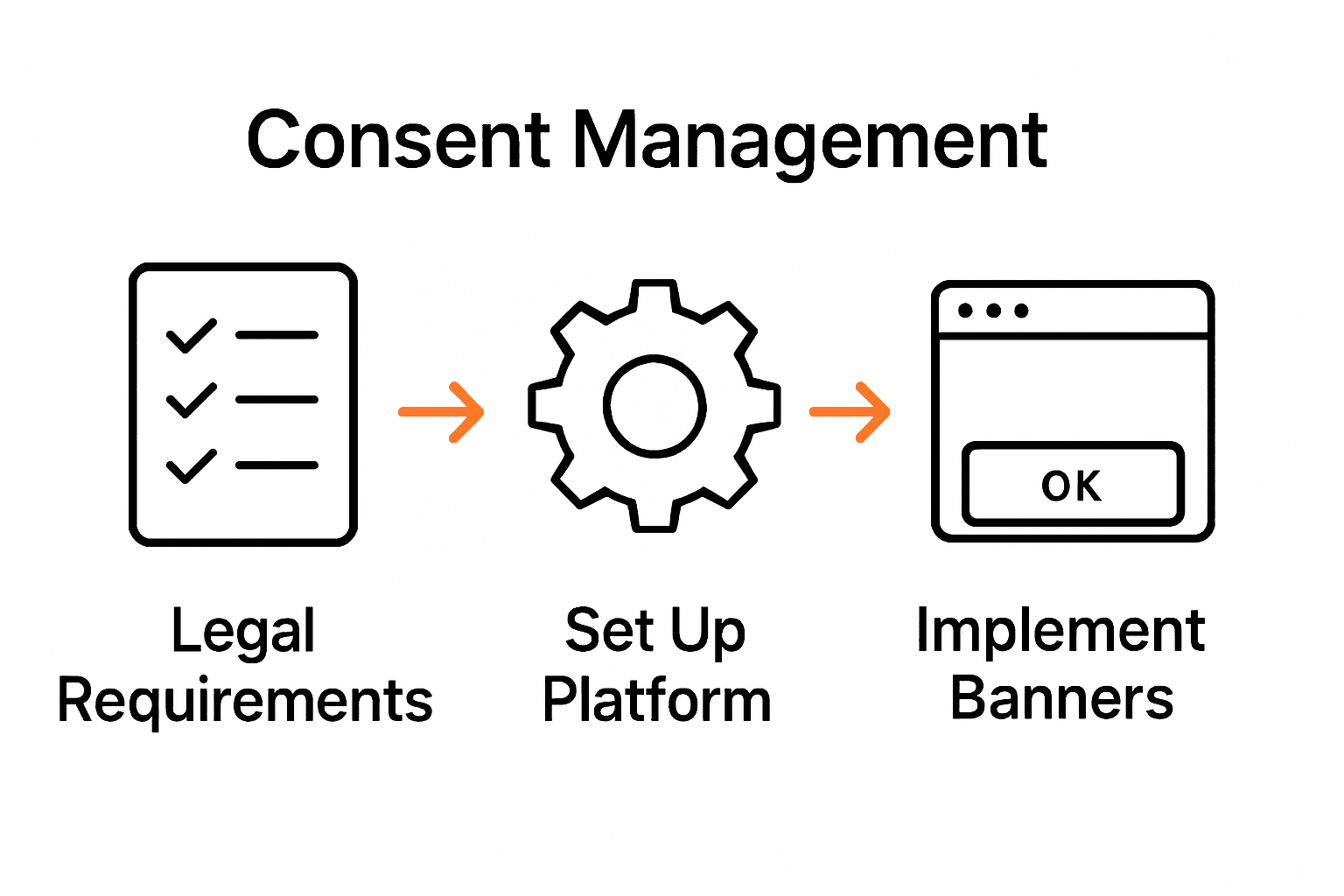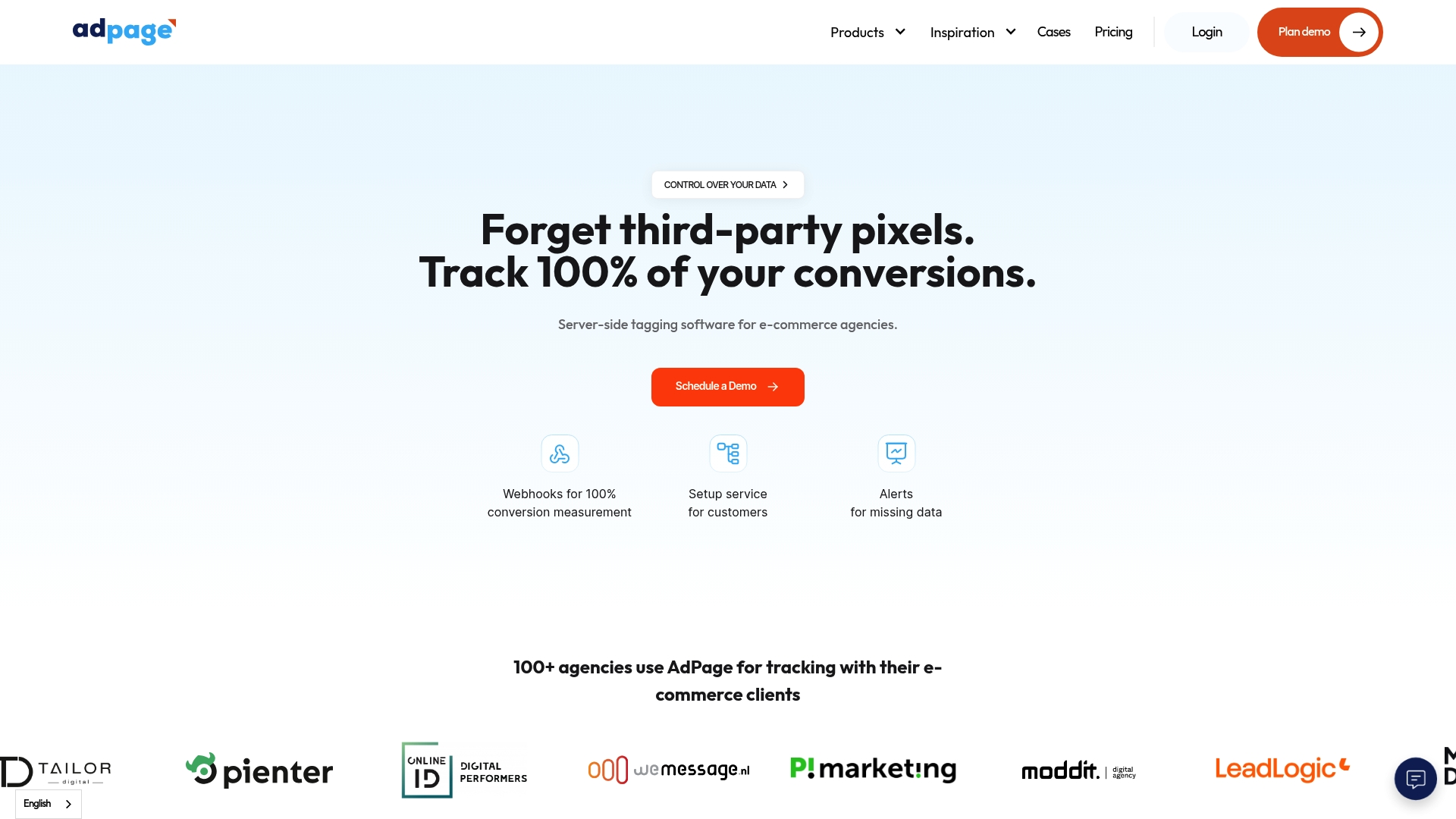Did you know that more than 70 percent of internet users are concerned about how their personal data is collected and used? These growing concerns are pushing businesses to rethink the way they handle consent and user privacy online. Establishing clear, region-specific consent practices not only keeps you compliant with strict regulations but helps you build trust with your audience, protecting both your company and your users every step of the way.
Table of Contents
- Step 1: Assess Legal Consent Requirements For Your Region
- Step 2: Configure Your Consent Management Platform
- Step 3: Integrate Consent Banners With Your E-Commerce Site
- Step 4: Customize Consent Options For Transparency
- Step 5: Verify Consent Data Collection And Compliance
Quick Summary
| Key Point | Explanation |
|---|---|
| 1. Assess regional consent laws | Research local data protection regulations to understand specific consent requirements for user data collection. |
| 2. Configure your consent management platform | Implement a system that allows for nuanced user permissions and tracks consent effectively. |
| 3. Integrate user-friendly consent banners | Design clear and accessible consent banners that engage users without disrupting their experience. |
| 4. Customize consent options for users | Provide transparent choices regarding data usage to build user trust and comply with regulations. |
| 5. Verify compliance and consent practices | Regularly audit and validate your consent methods to ensure alignment with legal standards and enhance user trust. |
Step 1: Assess legal consent requirements for your region
Navigating legal consent requirements demands precision and understanding of regional data protection regulations. Your goal in this step is to methodically research and identify specific consent frameworks applicable to your business operations and target markets.
Start by mapping out the jurisdictions where your digital services operate. According to OECD, obtaining explicit consent is crucial for collecting sensitive personal data. This means understanding nuanced legal requirements in each region where you collect user information. For European businesses, GDPR provides comprehensive guidelines. US companies need to consider state specific regulations like California Consumer Privacy Act. Asian markets often have unique data protection frameworks requiring specific consent mechanisms.
Practically speaking this involves three key actions: researching local data protection laws, documenting specific consent requirements, and creating a compliance checklist. W3 recommends implementing standards like Global Privacy Control that allow users transparent options for managing their data sharing preferences. By systematically approaching consent management you transform a complex legal requirement into a trust building mechanism with your users.
Pro Tip: Always consult local legal experts to ensure full compliance with regional data protection regulations.
Once you understand regional requirements you will be prepared to design a robust user consent collection strategy that respects user privacy and meets legal standards.
Step 2: Configure your consent management platform
Configuring a consent management platform is your strategic approach to creating transparent and legally compliant user data collection processes. Your goal is to implement a robust system that seamlessly captures user preferences while maintaining regulatory adherence.
According to Wikipedia, a Consent Management Platform (CMP) enables website operators to obtain and store user consent through interactive mechanisms like banners or pop-ups before collecting any data. Begin by selecting a platform that supports multiple consent granularity levels. This means allowing users to provide nuanced permissions rather than blanket acceptance. Key configuration steps include designing clear consent interfaces, mapping required consent categories, and establishing precise tracking parameters.
Your configuration should include detailed consent options that cover different data processing activities. Usercentrics demonstrates how businesses can collect and document user preferences comprehensively. Implement features like purpose limitation, where users understand exactly how their data will be utilized. Include options for users to modify their consent preferences easily and provide transparent information about data usage.
Pro Tip: Test your consent management platform across multiple devices and browsers to ensure consistent user experience.
Once configured, your consent management platform will serve as a critical bridge between user privacy expectations and your data collection requirements.

Step 3: Integrate consent banners with your e-commerce site
Integrating consent banners into your e-commerce site requires strategic placement and thoughtful design to ensure user engagement and legal compliance. Your objective is to create a seamless consent experience that protects user privacy while maintaining smooth website functionality.
According to Wikipedia, Consent Management Platforms display banners or pop-ups upon a user’s first visit, enabling them to grant or deny consent for data collection. When implementing your banner, prioritize visibility and clarity. Position the banner prominently but non intrusively typically at the bottom or top of the webpage. Craft concise language that explains data usage transparently and provides granular consent options. Include clear options to accept all, reject non essential cookies, or customize preferences.
Usercentrics demonstrates how consent management can be effectively integrated into websites to ensure compliance with privacy regulations. Your banner should include essential elements like a brief explanation of data processing purposes, links to detailed privacy policies, and toggles for different consent categories. Ensure the design matches your website aesthetics while remaining distinct enough to capture user attention.
Pro Tip: Implement a persistent consent settings option allowing users to modify their preferences easily at any time.
With your consent banner integrated, you will have established a transparent mechanism for managing user data permissions.

Step 4: Customize consent options for transparency
Customizing consent options transforms your data collection approach from a legal requirement to a user trust building mechanism. Your goal is to create a transparent consent experience that empowers users with clear choices and comprehensive information.
University of Washington advises that consent mechanisms must be clear and prominently displayed, providing sufficient information for users to make informed decisions. Break down your consent options into granular categories such as analytics tracking, marketing communications, personalisation, and third party data sharing. For each category, include a brief plain language explanation of what data will be collected, how it will be used, and the potential implications of granting or withholding consent.
According to OECD, developing clear guidelines for consent collection involves creating comprehensive templates and implementing robust technical measures. Ensure each consent option includes a simple toggle mechanism, with pre unchecked boxes for non essential tracking. Add easily accessible links to your full privacy policy and create a straightforward process for users to modify their preferences at any time.
Pro Tip: Use simple language and avoid technical jargon when explaining data usage to improve user understanding.
By meticulously customising your consent options, you demonstrate respect for user privacy and build trust in your digital ecosystem.
Step 5: Verify consent data collection and compliance
Verifying consent data collection and compliance is your final critical step in creating a robust and legally sound user tracking system. Your objective is to implement comprehensive validation mechanisms that ensure every aspect of your consent management meets regulatory standards.
W3C outlines that data retention must be limited to what is reasonably necessary and stored no longer than required. Develop a systematic audit process that includes regular reviews of your consent data collection practices. This involves creating detailed logs of user consent interactions, tracking timestamps for when consent was given, and documenting the specific purposes for which data will be used. Implement automatic data purging mechanisms that remove user information once consent is withdrawn or the data retention period expires.
According to HHS, electronic consent systems must meet strict regulatory requirements for validity. Conduct periodic compliance checks that validate your consent mechanisms against current privacy regulations. This includes verifying that your consent banners provide clear information, offer genuine user choice, and maintain comprehensive documentation of user permissions. Test your systems across different devices and user scenarios to ensure consistent and transparent consent collection.
Pro Tip: Implement automated compliance reporting to track and document your consent management effectiveness.
By meticulously verifying your consent data collection processes, you transform compliance from a challenge into a strategic advantage for your business.
Enhance Your User Consent Strategy with AdPage
Collecting precise user consent is vital for accurate conversion tracking as explained in the article “How to Collect User Consent for Accurate Conversion Tracking”. Many businesses struggle with compliance demands such as GDPR and the need to gain granular consent while maintaining seamless user experience. The pain points highlighted include navigating complex consent frameworks, ensuring transparency, and verifying collected data to optimise marketing outcomes.
AdPage offers a powerful solution designed specifically to tackle these challenges. Featuring server-side tagging technology, it enables e-commerce businesses and marketing agencies to capture 100 percent of conversions reliably without losing critical user insights due to blocked cookies or incomplete consent data. Its consent management capabilities align with regional privacy regulations, helping you stay compliant while building trust with customers.
Take control of your consent collection with tools that provide:
- Granular consent options that respect user privacy
- Seamless integration with platforms like Shopify and WooCommerce
- Detailed reporting and visitor identity services to optimise campaigns

Stop losing conversions to tracking gaps and legal uncertainties. Discover how AdPage’s consent-ready architecture can transform your marketing efforts today. Visit AdPage official site to explore features and start your onboarding journey. Learn more about our server-side tagging solutions and see how they facilitate precise consent management for better business growth.
Frequently Asked Questions
What are the legal consent requirements for collecting user data?
Obtaining legal consent for user data collection requires understanding regulations specific to your region, like GDPR or state laws. Research local data protection laws to create a compliance checklist and ensure that your consent collection methods are aligned with legal standards.
How do I configure a consent management platform for my website?
To configure a consent management platform, select one that allows for various levels of user permissions. Follow steps like designing clear consent interfaces and mapping necessary consent categories to ensure that your platform collects the required user agreements effectively.
What should I include in my consent banners on an e-commerce site?
Your consent banners should include clear, concise information about data usage and options for users to accept or reject certain types of cookies. Position the banner prominently on the site and make sure it mentions the purposes for data collection and links to your full privacy policy for transparency.
How can I ensure my consent options are clear and user-friendly?
Customize your consent options by breaking them down into specific categories, like analytics and marketing, and provide plain language explanations for each. Use simple toggles for users to modify their preferences easily, which enhances understanding and promotes a positive user experience.
What steps can I take to verify compliance with consent regulations?
To verify compliance, develop an audit process that includes regular reviews of your consent data collection practices. Track user consent interactions and implement automatic data purging for any information that is no longer needed or if consent is withdrawn to maintain regulatory adherence.
How often should I review my consent data collection practices?
Conduct periodic reviews of your consent data collection practices, ideally every 6 to 12 months, to ensure ongoing compliance with current regulations. This systematic auditing includes analyzing consent banners, user interactions, and overall data retention policies to make adjustments as necessary.



.png)
